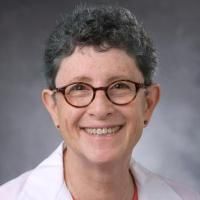Hematopoietic Stem Cell Transplantation to Treat Leukodystrophies: Clinical Practice Guidelines from the Hunter's Hope Leukodystrophy Care Network.
Date
2019-12
Journal Title
Journal ISSN
Volume Title
Repository Usage Stats
views
downloads
Citation Stats
Abstract
The leukodystrophies are a heterogeneous group of inherited diseases characterized by progressive demyelination of the central nervous system leading to devastating neurologic symptoms and premature death. Hematopoietic stem cell transplantation (HSCT) has been successfully used to treat certain leukodystrophies, including adrenoleukodystrophy, globoid leukodystrophy (Krabbe disease), and metachromatic leukodystrophy, over the past 30 years. To date, these complex patients have primarily been transplanted at a limited number of pediatric centers. As the number of cases identified through pregnancy and newborn screening is increasing, additional centers will be required to treat these children. Hunter's Hope created the Leukodystrophy Care Network in part to create and standardize high-quality clinical practice guidelines to guide the care of affected patients. In this report the clinical guidelines for the care of pediatric patients with leukodystrophies undergoing treatment with HSCT are presented. The initial transplant evaluation, determination of patient eligibility, donor selection, conditioning, supportive care, and post-transplant follow-up are discussed. Throughout these guidelines the need for early detection and treatment and the role of the partnership between families and multidisciplinary providers are emphasized.
Type
Department
Description
Provenance
Citation
Permalink
Published Version (Please cite this version)
Publication Info
Page, Kristin M, Elizabeth O Stenger, James A Connelly, David Shyr, Tara West, Susan Wood, Laura Case, Maureen Kester, et al. (2019). Hematopoietic Stem Cell Transplantation to Treat Leukodystrophies: Clinical Practice Guidelines from the Hunter's Hope Leukodystrophy Care Network. Biology of blood and marrow transplantation : journal of the American Society for Blood and Marrow Transplantation, 25(12). pp. e363–e374. 10.1016/j.bbmt.2019.09.003 Retrieved from https://hdl.handle.net/10161/24569.
This is constructed from limited available data and may be imprecise. To cite this article, please review & use the official citation provided by the journal.
Collections
Scholars@Duke

Laura Elizabeth Case
Laura E Case, PT, DPT, MS, PhD, PCS, C/NDT is a board-certified clinical specialist in pediatric physical therapy. She has dedicated her career to teaching, research in childhood-onset neuromusculoskeletal disorders, and to the lifelong treatment of people with childhood-onset neurological and neuromuscular disorders such as cerebral palsy, traumatic brain injury, Duchenne muscular dystrophy, spinal muscular atrophy, Pompe disease, myelodysplasia, juvenile rheumatoid arthritis, and brachial plexus injury.
She has been involved in numerous clinical trials for the treatment of disorders including Pompe disease and other metabolic disorders, cerebral palsy, Duchenne muscular dystrophy, and spinal muscular atrophy. Dr. Case has participated in the development of international guidelines for the management of Duchenne muscular dystrophy, Pompe disease, and other glycogen storage diseases.
She teaches and consults internationally, has worked on a number of Center for Disease Control (CDC) task forces, has served on numerous committees and task forces in the pediatric section of APTA, served two terms as NC State Representative to the APTA Section on Pediatrics, and is a member of the North American Pompe Registry Board of Advisors.

Joanne Kurtzberg
Dr. Kurtzberg is an internationally renowned expert in pediatric hematology/oncology, pediatric blood and marrow transplantation, umbilical cord blood banking and transplantation, and novel applications of cord blood and birthing tissues in the emerging fields of cellular therapies and regenerative medicine. Dr. Kurtzberg serves as the Director of the Marcus Center for Cellular Cures (MC3), Director of the Pediatric Transplant and Cellular Therapy Program, Director of the Carolinas Cord Blood Bank, and Co-Director of the Stem Cell Transplant Laboratory at Duke University. The Carolinas Cord Blood Bank is an FDA licensed public cord blood bank distributing unrelated cord blood units for donors for hematopoietic stem cell transplantation (HSCT) through the CW Bill Young Cell Transplantation Program. The Robertson GMP Cell Manufacturing Laboratory supports manufacturing of RETHYMIC (BLA, Enzyvant, 2021), allogeneic cord tissue derived and bone marrow derived mesenchymal stromal cells (MSCs), and DUOC, a microglial/macrophage cell derived from cord blood.
Dr. Kurtzberg’s research in MC3 focuses on translational studies from bench to bedside, seeking to develop transformative clinical therapies using cells, tissues, molecules, genes, and biomaterials to treat diseases and injuries that currently lack effective treatments. Recent areas of investigation in MC3 include clinical trials investigating the safety and efficacy of autologous and allogeneic cord blood in children with neonatal brain injury – hypoxic ischemic encephalopathy (HIE), cerebral palsy (CP), and autism. Clinical trials testing allogeneic cord blood are also being conducted in adults with acute ischemic stroke. Clinical trials optimizing manufacturing and testing the safety and efficacy of cord tissue MSCs in children with autism, CP and HIE and adults with COVID-lung disease are underway. DUOC, given intrathecally, is under study in children with leukodystrophies and adults with primary progressive multiple sclerosis.
In the past, Dr. Kurtzberg has developed novel chemotherapeutic drugs for acute leukemias, assays enumerating ALDH bright cells to predict cord blood unit potency, methods of cord blood expansion, potency assays for targeted cell and tissue based therapies. Dr. Kurtzberg currently holds several INDs for investigational clinical trials from the FDA. She has also trained numerous medical students, residents, clinical and post-doctoral fellows over the course of her career.
Unless otherwise indicated, scholarly articles published by Duke faculty members are made available here with a CC-BY-NC (Creative Commons Attribution Non-Commercial) license, as enabled by the Duke Open Access Policy. If you wish to use the materials in ways not already permitted under CC-BY-NC, please consult the copyright owner. Other materials are made available here through the author’s grant of a non-exclusive license to make their work openly accessible.
